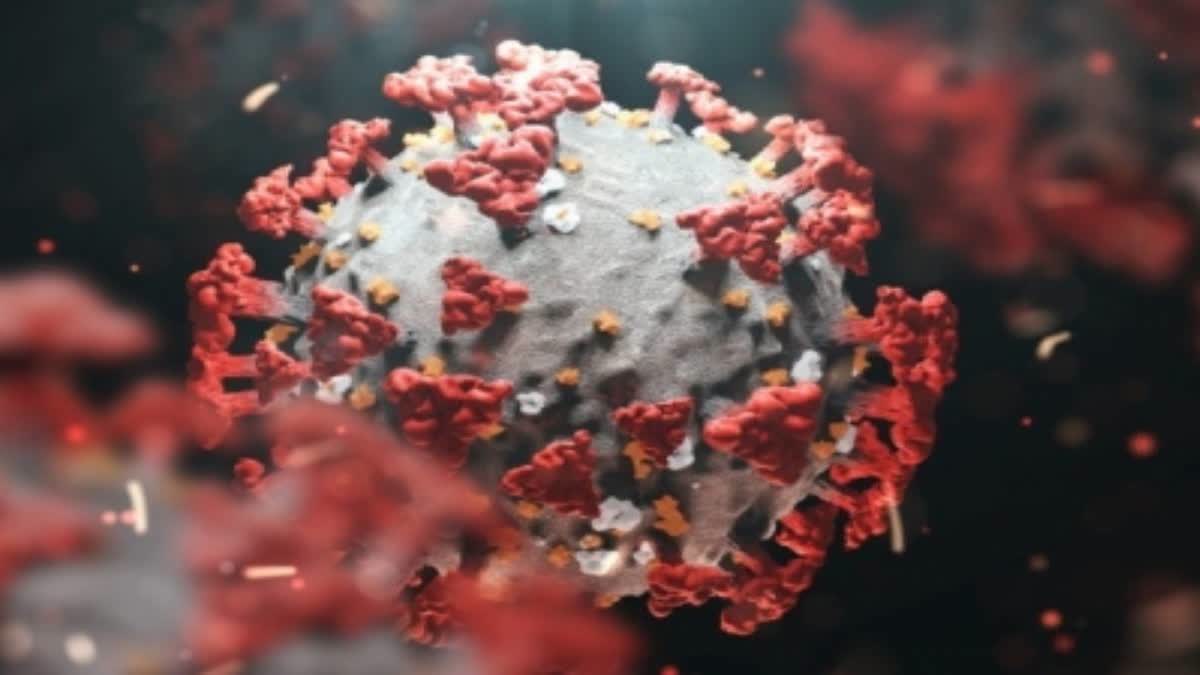New Delhi: In a latest development, the Indian SARS-CoV2-Genomic Consortium (INSACOG) has identified four cases of EG 5.1, an Omicron variant of Covid-19 from Maharashtra, Gujarat, and Karnataka which may contribute to a surge in cases.
Significantly, a World Health Organisation (WHO) report said that based on its genetic features, immune escape characteristics and growth rate estimates, EG 5.1 (EG 5.1 is a subvariant within the EG 5 lineage) may spread globally and contribute to a surge in cases.
“Several countries with EG 5.1 prevalence have seen increases in cases and hospitalisations, although at present there is no evidence of an increase in disease severity directly associated with EG 5.1,” the WHO said.
The latest INSACOG bulletin, however, said that Omicron and its sub-lineages continue to be the dominant variants in India. “The most prevalent variant is XBB (100 percent) in different parts of India. Recently four cases of EG.5.1 variant have been identified from Maharashtra, Gujarat, and Karnataka,” the INSACOG said.
However, till date BA 2.86 variant has not been reported from India. Also, no increase in disease severity or hospitalisation has been observed.
As per INSACOG, EG 5.1 is the most prevalent variant of interest (VOI) and has been reported by 73 countries. “EG 5 continues to rise in prevalence, accounting for 33.6 percent of sequences submitted to GISAID in week 36 in comparison to 25.9 percent in week 32. Based on the available evidence, the public health risk posed by EG 5.1 is evaluated as low at the global level, aligning with the risk associated with XBB 1.16 and the other currently circulating VOIs,” it said.
According to WHO, available evidence does not suggest that EG 5.1 has additional public health risks relative to the other currently circulating SARS-CoV-2 descendent lineages. However, due to the prevailing unreliability of reporting and non representative availability of sequencing, additional data outlined in this risk evaluation are needed for a more comprehensive evaluation of the risk posed by EG 5.1, the WHO noted.
Taking on the issue, Dr Giridhar Gyani, director general of the Association of Healthcare Providers India (AHCPI) said that EG 5.1 is still limited in India.
“People need not worry at present following the fact that most of our countrymen are already been vaccinated. In addition, the severity of this EG 5 lineage of Omicron is not yet verified,” Dr Gyani said.
Also Read: Children infected with Omicron Covid variant remain infectious for 3 days: Study
While EG 5.1 has shown increased prevalence, growth advantage, and immune escape properties, there have been no reported changes in disease severity till date, he stated. “While concurrent increase in the proportion of EG 5.1 and COVID-19 hospitalisations (lower than previous waves) have been observed in countries such as Japan and the Republic of Korea, no associations have been made between these hospitalisations and EG 5.1. However, due to its growth advantages and immune escape characteristics, EG 5.1 may cause a rise in case incidence and become dominant in some countries,” he said.
As per government data, 2,20,67,76,428 Covid-19 doses have been administered across India with 18+ population receiving 92,23,69,227 first doses and 86,57,85,606 second doses.
People between 15-18 years received 6,21,62,312 first doses and 5,38,04,017 second doses while those aged between 12-14 years received 4,12,99,985 first doses and 3,25,39,044 second doses. Similarly, people between 18-59 years received 15,85,80,929 precaution doses and those aged above 60, healthcare workers, and frontline workers received 7,02,35,308 precaution dose.
Also Read: Study explains why Omicron variants continue to spread


